Athens is a the capital of Greece. It is a beautiful city and the best way to discover its beauties is to take a stroll through it. Discover the rich history of the city, admire the archaeological museums and the Byzantines churches, walk through the entire old city, Plaka, and feel the ancient breeze or the rich fragrances traveling through the air. Discover the little secrets Athens hides and have a wonderful time!
Here down you will find the maps of all what you can explore in Athens!
1. Acropolis: The Acropolis of Athens is an ancient citadel located on a high rocky outcrop above the city of Athens and containing the remains of several ancient buildings of great architectural and historic significance, the most famous being the Parthenon.
While there is evidence that the hill was inhabited as far back as the fourth millennium BC, it was Perikles (c. 495 – 429 BC) in the fifth century BC who coordinated the construction of the site's most important buildings including the Parthenon, the Propylaia, the Erechtheion and the temple of Athena Nike.
The Acropolis was formally proclaimed as the preeminent monument on the European Cultural Heritage list of monuments on 26 March 2007.

2. Athens museums

2. Athens museums
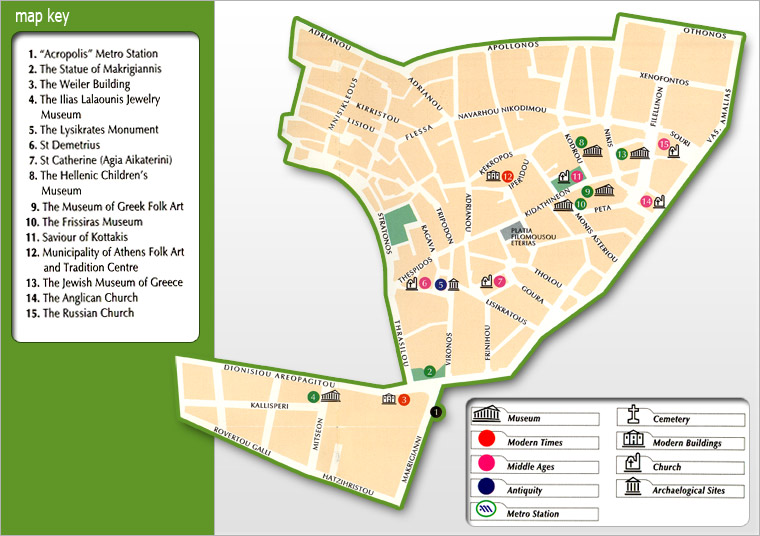
The most important, famous and modern museum in Athens is the new Acropolis museum.The Acropolis Museum (is an archaeological museum focused on the findings of the archaeological site of the Acropolis of Athens. The museum was built to house every artifact found on the rock and on its feet, from the Greek Bronze Age to Roman and Byzantine Greece. It also lies on the archaeological site of Makrygianni and the ruins of a part of Roman and early Byzantine Athens.
The museum was founded in 2003, while the Organisation of the Museum was established in 2008. It opened to the public on June 21, 2009. Nearly 4,000 objects are exhibited over an area of 14,000 square metres.The Organisation for the Construction of the new museum is chaired by Aristotle University of Thessaloniki Professor Emeritus of Archaeology, Dimitrios Pandermalis.

3. Plaka walking in Athens' old city
Pláka (Greek: Πλάκα) is the old historical neighborhood of Athens, clustered around the northern and eastern slopes of the Acropolis, and incorporating labyrinthine streets and neoclassical architecture. Plaka is built on top of the residential areas of the ancient town of Athens. It is known as the "Neighbourhood of the Gods" due to its proximity to the Acropolis and its many archaeological sites.

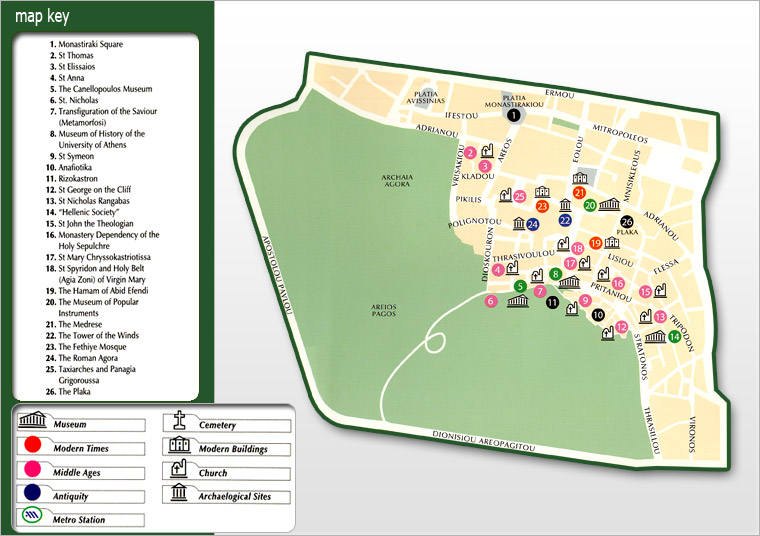
4. The panorama of Byzantine Athens
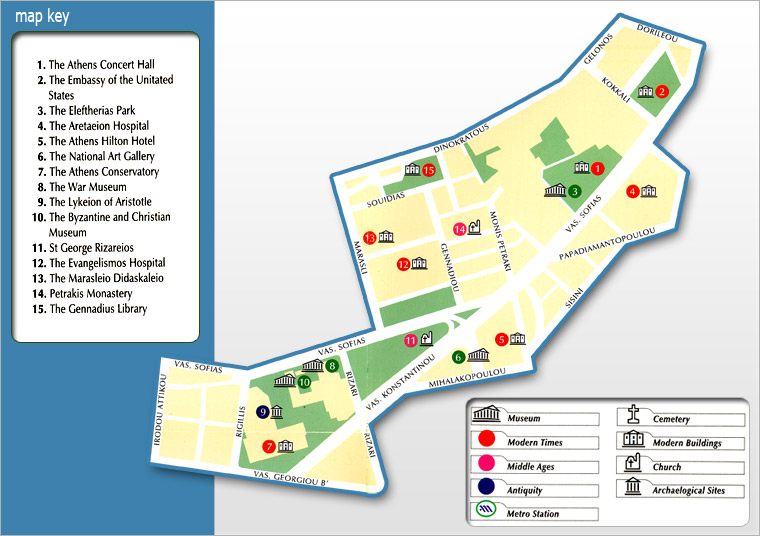
5. View over Athens : the visitor to Athens cannot leave the city without visiting the Benaki Museum, the Museum of Cycladic Art and its unique Cycladic figurines, the relaxing Kolonaki Square and Lycabettus Hill that offers a magnificent view over Athens.
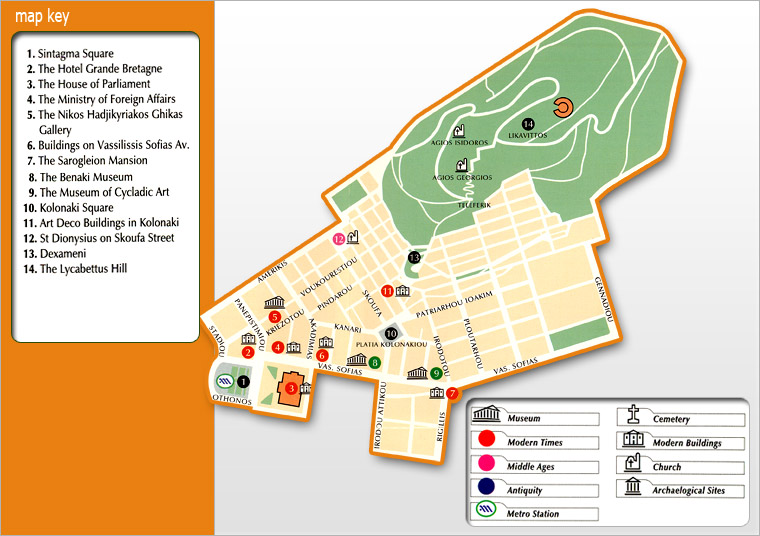
6. The Panathenaic Stadium or Panathinaiko, also known as the Kallimarmaro (meaning the "beautifully marbled"),is the most ancient stadium in use in the world, is an athletic stadium in Athens that hosted the first modern Olympic Games in 1896. Reconstructed from the remains of an ancient Greek stadium, the Panathenaic is the only major stadium in the world built entirely of white marble (from Mount Penteli) and is one of the oldest in the world.

View Larger Map
7. Gardens of Athens
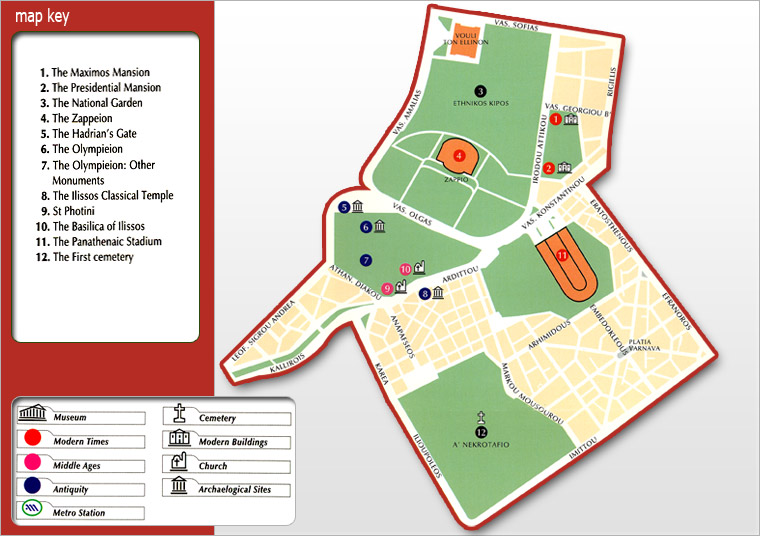
8. Lycabetus Hill
Mount Lycabettus, also known as Lycabettos, Lykabettos or Lykavittos, is a Cretaceous limestone hill in Athens, Greece. At 277 meters (908 feet) above sea level, the hill is the highest point in the city that surrounds it. Pine trees cover its base, and at its two peaks are the 19th century Chapel of St. George, a theatre, and a restaurant.

The hill is a popular tourist destination and can be ascended by the Lycabettus Funicular, a funicular railway which climbs the hill from a lower terminus at Kolonaki (The railway station can be found at Aristippou street). Lycabettus appears in various legends. Popular stories suggest it was once the refuge of wolves, possibly the origin of its name (which means "the one (the hill) that is walked by wolves"). Mythologically, Lycabettus is credited toAthena, who created it when she dropped a mountain she had been carrying from Pallene for the construction of the Acropolis after the box holdingErichthonius was opened.

The hill also has a large open-air theater at the top, which has housed many Greek and international concerts.
 |
| Aerial view from Lycabetus |
9. Beaches of Athens
Although Athens is mostly famous for the sightseeing and not for the beaches, however it has many beautiful beaches on the southern and the north eastern side of Attica peninsula. All the coastline from Glyfada to Cape Sounion have nice organized beaches as well as secluded coves.


.jpg)

No comments:
Post a Comment